What We Do
We focus on identifying treatments to reduce the risk of neurologic disabilities in babies and children who experience hypoxic brain injuries. We conduct both laboratory and clinical research. Our work has been funded by the NIH and several foundations and industry, including the American Heart Association, International Anesthesia Research Society, Foundation for Anesthesia Education and Research, The Hartwell Foundation, and Medtronic.Contact
 Jennifer Lee, MD
Jennifer Lee, MD
Pediatric Neuroscience Research Lab
The Johns Hopkins University School of Medicine
Department of Anesthesiology and Critical Care Medicine
Pediatric Neuroscience Research Lab
720 Rutland Ave.
Baltimore, MD 21205
[email protected]
- Cell Death Mechanisms
- Proteostasis in Neonatal Brain Hypoxia
- Cerebrovascular Autoregulation

Jennifer K. Lee, MD
Dr. Lee is a pediatric anesthesiologist and pediatrician with formal training in pediatric critical care medicine. She leads laboratory and clinical research on neuroprotection, cell death mechanisms, and cerebrovascular blood pressure autoregulation in babies and children.
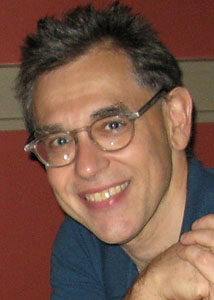
Lee J. Martin, PhD
Dr. Martin is a Professor in Pathology, Neuroscience and Anesthesiology and Critical Care Medicine. He is also the Director of the Pathobiology Ph.D. Graduate Training Program at Johns Hopkins University. He is an expert in cell death mechanisms and cell signaling in human neurological diseases that span the newborn to aging brain.
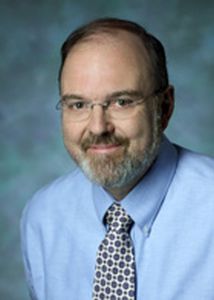
Raymond C. Koehler, PhD
Dr. Koehler is a Professor of Anesthesiology and Critical Care Medicine at Johns Hopkins University. He is also the director of the Pediatric Stroke Laboratory. Dr. Koehler is an expert in pediatric and adult cerebrovascular physiology and cerebral ischemic injury after stroke, cardiac arrest, and traumatic brain injury.
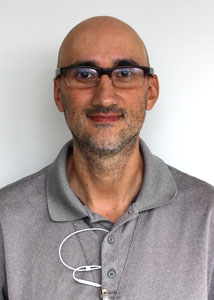
Rolando X. Avilés-Reyes, PhD
Dr.Avilés-Reyes is a postdoctoral fellow. He earned his PhD at the Universidad de Buenos Aires in Argentina and completed postdoctoral training at the University of Wisconsin-Madison. He studies oxidative stress, autophagy, and neural cell injury after hypoxia-ischemia and in neurodegenerative diseases.

May Chen, MD
Dr. Chen is an Assistant Professor of Neonatology in the Department of Pediatrics at Johns Hopkins University. She studies cell death mechanisms mediated by mitochondria after neonatal hypoxic brain injury.

Nagat El Demerdash, MD, MS, PhD
Dr. El Demerdash is a postdoctoral fellow. She earned her Ph.D. at the University of Autonoma de Madrid in Spain. She has studied different models of neonatal and pediatric brain injury with a focus on mechanisms of injury and repair in the developing brain. Her expertise includes hypoxic-ischemic injury and traumatic brain injury.
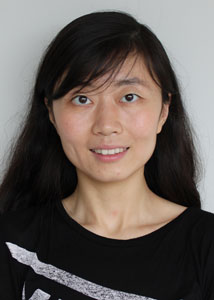
Xiuyun Liu, PhD
Dr. Liu received her B.S. and M.S. in Biomedical Engineering from Tianjin University in China and her Ph.D. in Clinical Neurosciences from the University of Cambridge in the United Kingdom. She did her first postdoctoral fellowship at the University of California - San Francisco and then joined our team for a second postdoctoral fellowship. Dr. Liu studies methods to measure cerebral autoregulation, physiologic signal processing, intracranial waveform analysis, neurovascular coupling, and cerebral blood flow dynamics.
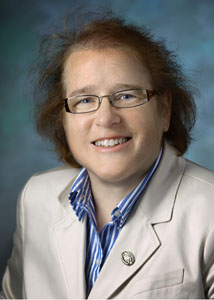
Frances J. Northington, MD
Dr. Northington is a Professor of Neonatology in the Department of Pediatrics at Johns Hopkins University. She also directs the Neonatal Neuro-Intensive Care Unit. She studies treatments to reduce the risk of permanent brain injury in babies who have birth injuries.

Caitlin O'Brien, MD
Dr. O'Brien is an Assistant Professor of Pediatric Critical Care Medicine in the Department of Anesthesiology and Critical Care Medicine at Johns Hopkins University. She studies CPR, inflammation, and neuronal death after pediatric cardiac arrest.

Shawn Adams, BS
Mr. Adams is our research technician. He has a Bachelor's degree in Animal Science from the University of Maryland, College Park.
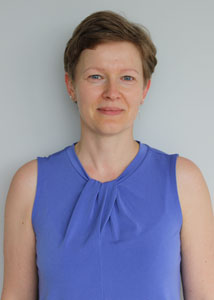
Ewa Kulikowicz, MS
Ms. Kulikowicz is our laboratory manager. She has a Doctorate in Veterinary Medicine from Warmia and Mazuria University in Poland and a Master's of Science in Biotechnology from Johns Hopkins University.
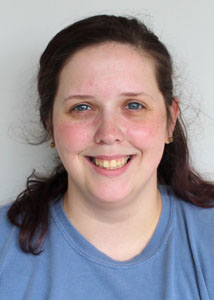
Bailey Lester, MS
Ms. Lester is a research technician. She received her B.S. in Animal Science from Clemson University and her M.S. in Poultry Science from the University of Georgia.
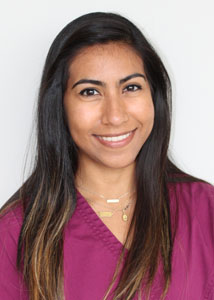
Natalia A. Rivera Diaz, MS
Ms Diaz is our research specialist. She received her Bachelor's degree in Animal Science/Pre-veterinary and a Master's of Science in Animal Pathology from University of Puerto Rico Mayaguez Campus.
Dr. Lee-Summers’ research has been published in a variety of journals and publications:
- Wang B, Armstrong JS, Lee JH, Bhalala U, Kulikowicz E, Zhang E, Reyes M, Moy N, Spicer D, Zhu J, Yang ZJ, Koehler RC, Martin LJ, Lee JK. Rewarming from therapeutic hypothermia induces cortical neuron apoptosis in a swine model of neonatal hypoxic-ischemic encephalopathy. Journal of Cerebral Blood Flow and Metabolism 2015; 35(5): 781-93.
https://journals.sagepub.com/doi/10.1038/jcbfm.2014.245 - Wang B, Armstrong JS, Reyes M, Kulikowicz E, Lee JH, Spicer D, Bhalala U, Yang ZJ, Koehler RC, Martin LJ, Lee JK. White matter apoptosis is increased by delayed hypothermia and rewarming in a neonatal piglet model of hypoxic ischemic encephalopathy. Neuroscience 2016; 316:296-310.
https://pubmed.ncbi.nlm.nih.gov/26739327/ - Lee JK, Wang B, Reyes M, Armstrong JS, Kulikowicz E, Santos PT, Lee JH, Koehler RC, Martin LJ. Hypothermia and rewarming activate and macroglial unfolded protein response independent of hypoxic-ischemic brain injury in neonatal piglets. Dev Neurosci 2016; 38:277-294.
https://www.karger.com/Article/Fulltext/448585 - Santos PT, O’Brien CE, Chen MW, Hopkins CD, Adams S, Kulikowicz E, Singh R, Koehler RC, Martin LJ, Lee JK. Proteasome biology is compromised in white matter after asphyxic cardiac arrest in neonatal piglets. J Am Heart Assoc 2018; 7: e009415.
https://www.ahajournals.org/doi/10.1161/JAHA.118.009415 - O’Brien CE, Santos PT, Kulikowicz E, Reyes M, Koehler RC, Martin LJ, Lee JK. Hypoxia-ischemia and hypothermia independently and interactively affect neuronal pathology in neonatal piglets with short-term recovery. Dev Neurosci 2019.
https://pubmed.ncbi.nlm.nih.gov/31108487/ - Singh R, Kulikowicz E, Santos PT, Koehler RC, Martin LJ, *Lee JK. Spatial T-maze identifies cognitive deficits in piglets 1 month after hypoxia-ischemia in a model of hippocampal pyramidal neuron loss and interneuron attrition. Behavioural Brain Research 2019.
https://www.sciencedirect.com/science/article/pii/S0166432818315365?via=ihub - Lee JK, Liu D, Raven EP, Jiang D, Liu P, Qin Q, Kulikowicz E, Santos PT, Adams S, Zhang J, Koehler RC, Martin LJ, Tekes A. Mean diffusivity in striatum correlates with acute neuronal death but not lesser neuronal injury in a pilot study of neonatal piglets with encephalopathy. J Magn Reson Imaging 2020.
https://dx.doi.org/10.1002/jmri.27181 - Lee JK, Poretti A, Perin J, Huisman TAGM, Parkinson C, Chavez-Valdez R, O’Connor M, Reyes M, Armstrong J, Jennings JM, Gilmore MM, Koehler RC, Northington FJ, Tekes A. Optimizing cerebral autoregulation may decrease neonatal regional hypoxic-ischemic brain injury. Dev Neurosci 2017; 39:248-256.
https://www.karger.com/Article/Fulltext/452833 - Burton VJ, Gerner G, Cristofalo E, Chung SE, Jennings JM, Parkinson C, Koehler RC, Valdez RC, Johnston MV, Northington FJ, Lee JK. A pilot cohort study of cerebral autoregulation and 2-year neurodevelopmental outcomes in neonates with hypoxic-ischemic encephalopathy who received therapeutic hypothermia. BMC Neurology 2015; 15:209–22.
https://bmcneurol.biomedcentral.com/articles/10.1186/s12883-015-0464-4 - Tekes A, Poretti A, Scheurkogel MM, Huisman TAGM, Howlett JA, Alqahtani E, Lee JH, Parkinson C, Shapiro K, Chung SE, Jennings JM, Gilmore MM, Hogue CW, Martin LJ, Koehler RC, Northington FJ, Lee JK. Apparent Diffusion Coefficient Scalars Correlate with Near Infrared Spectroscopy Markers of Cerebrovascular Autoregulation in Neonates Cooled for Perinatal Hypoxic Ischemic Injury. Am J Neuroradiol 2015; 36(1):188-93.
https://pubmed.ncbi.nlm.nih.gov/25169927/ - Lee JK, Brady KM, Chung SE, Jennings JM, Whitaker EE, Aganga D, Easley RB, Heitmiller K, Jamrogowicz JL, Larson AC, Lee JH, Jordan LC, Hogue CW, Lehmann CU, Bembea MM, Hunt EA, Koehler RC, Shaffner DH. A pilot study of cerebrovascular reactivity autoregulation after pediatric cardiac arrest. Resuscitation 2014; 85(10): 1387-93.
https://www.ncbi.nlm.nih.gov/pmc/articles/PMC4164565/ - Lee JK, Williams M, Reyes M, Ahn ES. Cerebrovascular blood pressure autoregulation monitoring and postoperative transient ischemic attack in pediatric moyamoya vasculopathy. Paediatr Anaesth 2018; 28: 94-102.
https://pubmed.ncbi.nlm.nih.gov/29205668/ - Howlett JA, Northington FJ, Gilmore MM, Tekes A, Huisman TAGM, Parkinson C, Chung SE, Jennings JM, Jamrogowicz JJ, Larson AC, Lehmann CU, Jackson E, Brady KM, Koehler RC, Lee JK. Cerebrovascular autoregulation and neurologic injury in neonatal hypoxic-ischemic encephalopathy. Pediatr Res 2013; 74: 525-535.
https://www.nature.com/articles/pr2013132.pdf?origin=ppub - Gilmore MM, Tekes A, Perin J,, Parkinson C, Spahic H, Chavez-Valdez R, Northington FJ. Lee JK. Later cooling within 6 h and temperatures outside 33-34 °C are not associated with dysfunctional autoregulation during hypothermia for neonatal encephalopathy. Pediatric Res 2020;
https://www.nature.com/articles/s41390-020-0876-8 - Lee JK, Kibler KK, Benni PB, Easley RB, Czosnyka M, Smielewski P, Koehler RC, Shaffner DH, Brady KM. Cerebrovascular reactivity measured by near-infrared spectroscopy. Stroke 2009; 40(5): 1820-1826.
https://www.ahajournals.org/doi/full/10.1161/STROKEAHA.108.536094 - Brady KM, Lee JK, Kibler KK, Smielewski P, Czosnyka M, Easley RB, Koehler RC, Shaffner DH. Continuous time-domain analysis of cerebrovascular autoregulatory vasoreactivity using near-infrared spectroscopy. Stroke 2007; 38(10): 2818-2825.
https://pubmed.ncbi.nlm.nih.gov/17761921/ - Lee JK, Brady KM, Mytar JO, Kibler KK, Carter EL, Hirsch KG, Hogue CW, Easley RB, Jordan LC, Smielewski P, Czosnyka M, Shaffner DH, Koehler RC. Cerebral blood flow and cerebrovascular autoregulation in a swine model of pediatric cardiac arrest and hypothermia. Crit Care Med 2011; 39(10): 2337-2345.
https://pubmed.ncbi.nlm.nih.gov/21705904/ - Lee JK, Yang ZJ, Bing W, Larson AC, Jamrogowicz JL, Kulikowicz E, Kibler KK, Mytar JO, Carter EL, Burman HT, Brady KM, Smielewski P, Czosnyka M, Koehler RC, Shaffner DH. Noninvasive autoregulation monitoring in a swine model of pediatric cardiac arrest. Anesth Analg 2012; 114(4): 825-836.
https://journals.lww.com/anesthesia-analgesia/Fulltext/2012/04000/Noninvasive_Autoregulation_Monitoring_in_a_Swine.24.aspx - Larson AC, Jamrogowicz JL, Kulikowicz E, Wang B, Yang ZJ, Shaffner DH, Koehler RC, Lee JK. Cerebrovascular autoregulation after rewarming from hypothermia in a neonatal swine model of asphyxic brain injury. J Appl Physiol 2013; 115(10): 1433-1442.
https://journals.physiology.org/doi/full/10.1152/japplphysiol.00238.2013 - Govindan RB, Brady KM, Massaro AN, Perin J, Jennings JM, duPlessis AJ, Koehler RC, Lee JK. Comparison of frequency- and time-domain autoregulation and vasoreactivity indices in a piglet model of hypoxia-ischemia and hypothermia. Dev Neurosci 2019.
https://www.karger.com/Article/FullText/499425 - Liu X, Hu X, Brady KM, Koehler RC, Smielewski P, Czosnyka M, Donnely J, Lee JK. Comparison of wavelet and correlation indices of cerebral autoregulation in a pediatric swine model of cardiac arrest. Sci Rep 2020.
https://www.nature.com/articles/s41598-020-62435-8
Our research has been funded by:
 American Heart Association
American Heart Association National Institutes of Health
National Institutes of Health The Hartwell Foundation
The Hartwell Foundation The Foundation for Anesthesia Education and Research
The Foundation for Anesthesia Education and Research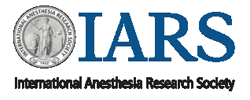 The International Anesthesia Research Society
The International Anesthesia Research Society The Thomas Wilson Sanitarium for Children
The Thomas Wilson Sanitarium for Children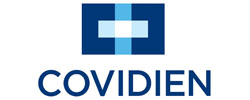 Covidien
Covidien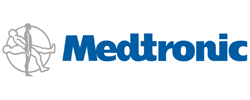 Medtronic
Medtronic Johns Hopkins University
Johns Hopkins University Johns Hopkins University Department of Anesthesiology and Critical Care Medicine
Johns Hopkins University Department of Anesthesiology and Critical Care Medicine Thrasher Research Fund
Thrasher Research Fund